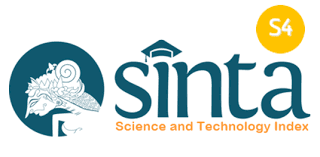Artikel (204)
This study aims are to find out implementation of the Kawasan Rumah Pangan Lestari Program (KRPL), to know the level of community participation in the Program and the factors related to the participation. This study was conducted in November - December 2018 in the Marga Kaya Village Jati Agung Subdi...
Jurnal Ilmu Ilmu Agribisnis: Journal of Agribusiness Science; Vol. 8 No. 2 (2020); 350-358 | 2020
The purposes of this study were to determine the level of adoption of integrated crop management ’jajar legowo’ innovation in lowland rice cultivation, related factors, household income of lowland rice farmers after adopting the innovation, and to know the relationship between the adoption rate ...
Jurnal Ilmu Ilmu Agribisnis: Journal of Agribusiness Science; Vol. 8 No. 2 (2020); 342-349 | 2020
This research aims to analyze the income of rubber plantation in the past year and the subjective welfare level of farmer household who switch commodity from rice plant to rubber in District of Abung Surakarta. This research was conducted in February-March 2019 using a survey method. The number of r...
Jurnal Ilmu Ilmu Agribisnis: Journal of Agribusiness Science; Vol. 8 No. 2 (2020); 334-341 | 2020
This research aims to analyze the factors that affect production of vegetable (chili,mustard and cabbage)farming and the technical efficiency. The research was conducted in North Dempo and South Pagar Alam Subdistrict of Pagar Alam. Farmer respondents were chosen by using simple random sampling. Dat...
Jurnal Ilmu Ilmu Agribisnis: Journal of Agribusiness Science; Vol. 8 No. 2 (2020); 326-333 | 2020
EFEKTIVITAS KEBIJAKAN HARGA ECERAN TERTINGGI (HET) DAN RANTAI PASOK BERAS MEDIUM DI PROVINSI LAMPUNG
Indonesia is a country that consumes and produces rice, so rice is a primary need in Indonesia. The government stipulates the highest retail price (HET) of rice policy to maintain the stability of rice price. The purposes of this study are to fin out the effectiveness of rice HET policy in Lampung P...
Jurnal Ilmu Ilmu Agribisnis: Journal of Agribusiness Science; Vol. 8 No. 2 (2020); 318-325 | 2020
This study aims to determine consumer characteristics, attitudes, decision-making processes, and customer satisfaction towards banana pie at YA and JB. The research samples were 66 people selected by accidental sampling. The first and third objectives were analyzed descriptively, the second objectiv...
Jurnal Ilmu Ilmu Agribisnis: Journal of Agribusiness Science; Vol. 8 No. 2 (2020); 310-317 | 2020
The study aims to analyze consumer attitudes, consumer satisfaction and the influence of consumer attitudes and satisfaction to the purchase of satay. Data were collected in June–July 2018. The research location is determined purposively with the consideration that the LWS and HJA Restaurants were...
Jurnal Ilmu Ilmu Agribisnis: Journal of Agribusiness Science; Vol. 8 No. 2 (2020); 303-309 | 2020
This study aims to analyze the technical efficiency of red chilli farming, the profitability of red chili farming, and factors that influence the profits of red chili farming and relative economic efficiency. Data collection was carried out in seven sub-districts, namely Sidomulyo, Candipuro, Kalian...
Jurnal Ilmu Ilmu Agribisnis: Journal of Agribusiness Science; Vol. 8 No. 2 (2020); 295-302 | 2020
The purposes of this study are to analyze income and risk of shrimp cultivation, factors affecting the income, and factors affecting land conversion from cultivating tiger shrimp to vaname shrimp. The study was conducted in Purworejo Village, Pasir Sakti Subdistrict, East Lampung District, in March ...
Jurnal Ilmu Ilmu Agribisnis: Journal of Agribusiness Science; Vol. 8 No. 2 (2020); 287-294 | 2020
The purposes of this study are to determine the communication behavior of pepper farmers, characteristics of pepper farmers and analyze the correlation between farmers’ characteristics and communication behavior in fulfilling pepper farming information. This research was conducted in Sukadana Baru...
Jurnal Ilmu Ilmu Agribisnis: Journal of Agribusiness Science; Vol. 8 No. 2 (2020); 280-286 | 2020


